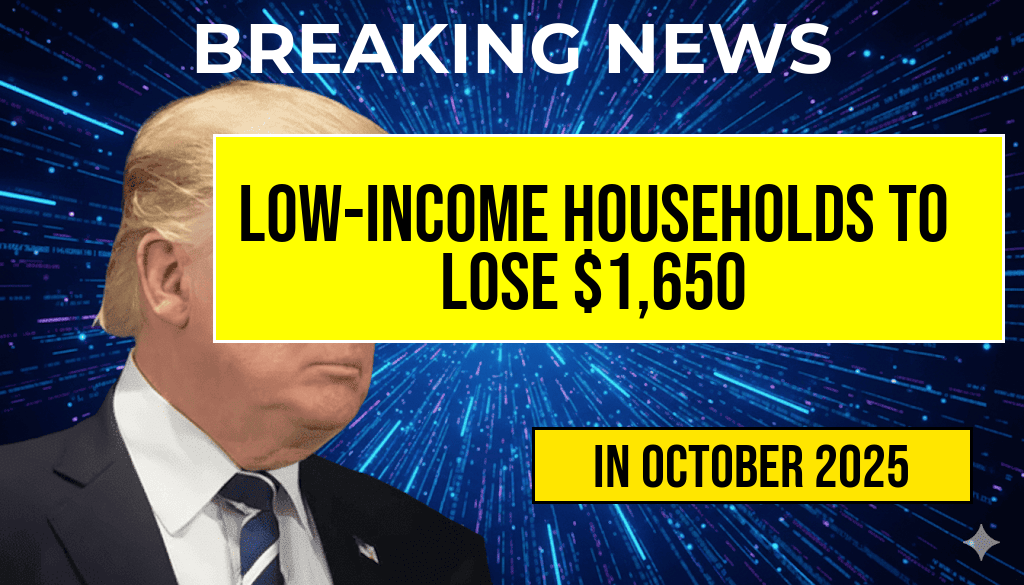Recent policy proposals are raising concerns among advocacy groups and economists about their potential impact on America’s most vulnerable populations. According to preliminary analyses, these new regulations could result in an average net loss of $1,650 annually for the poorest households—an outcome that could deepen existing economic disparities. The measures, which aim to alter welfare, tax, and social support programs, are projected to disproportionately affect households already struggling to meet basic needs, prompting urgent debate over policy priorities and social equity.
Overview of the Proposed Policies
The policy changes under consideration include modifications to eligibility criteria for social assistance programs, adjustments to minimum wage regulations, and potential cuts to tax credits aimed at low-income earners. Officials argue these reforms are necessary to streamline government spending and incentivize employment, but critics argue they could inadvertently undermine the financial stability of those who need support most.
Key Components of the Policy Changes
- Reduction in Supplemental Nutrition Assistance Program (SNAP) Benefits): Proposed tightening of eligibility, potentially excluding thousands of households from receiving full benefits.
- Alteration of Earned Income Tax Credit (EITC): Possible decreases in credit amounts for low-wage workers, especially those with children.
- Changes to Medicaid Expansion: Potential rollback of expansion efforts, limiting access to healthcare for low-income populations.
- Adjustment of Minimum Wage Policies: A push to freeze or slow increases, which could hinder income growth for low-income workers.
Projected Economic Impact on Low-Income Households
| Income Bracket | Average Loss per Household | Number of Affected Households (millions) | Total Estimated Loss (billions) |
|---|---|---|---|
| Bottom 20% | $1,650 | 12 | $18.6 |
Economists warn that a net reduction of $1,650 per household can have ripple effects on local economies and community health. For families living paycheck to paycheck, such cuts can mean fewer resources for essentials like housing, food, and healthcare, increasing the risk of poverty-related hardships.
Stakeholder Reactions and Expert Analysis
Advocates for the Poor Express Concern
Leaders of various social advocacy organizations have voiced strong opposition to the proposed policies. Sarah Jenkins, director of the National Poverty Center, stated, “Reducing benefits and tightening eligibility criteria will push vulnerable families further into hardship. These measures ignore the reality that many low-income households rely heavily on government support to survive.”
Government Officials Defend the Measures
Proponents argue that the reforms are essential for fiscal responsibility and will promote self-sufficiency. A spokesperson for the Department of Health and Human Services emphasized, “Our goal is to create policies that foster economic independence while ensuring taxpayer dollars are used efficiently.” They also highlight efforts to implement job training programs alongside the reforms to mitigate potential negative impacts.
Historical Context and Policy Implications
Similar policy shifts in the past have often ignited debate over their long-term effects on income inequality and social mobility. Studies suggest that reductions in social safety nets can lead to increased reliance on emergency services and higher long-term costs to society. Conversely, advocates for reform argue that targeted policies can reduce dependency and promote economic growth.
Potential for Policy Reversal or Adjustment
Given the public outcry and economic data, some policymakers are calling for amendments to the proposed reforms. Discussions are underway within Congress to refine eligibility criteria and implement safeguards that prevent unintended hardship for the most vulnerable. The outcome of these negotiations could determine whether the policies are enacted as initially drafted or adjusted to better balance fiscal concerns with social needs.
Broader Social and Economic Considerations
The debate over these policies underscores a fundamental tension in social policy: balancing fiscal responsibility with the imperative to support those in greatest need. As the U.S. grapples with income inequality and economic recovery, the impact of such reforms will likely influence the social fabric and economic stability of low-income communities for years to come.
For more insight into the history of social safety net reforms, visit Wikipedia’s article on Social Safety Nets. To follow ongoing legislative developments, consult reports from Forbes.
Frequently Asked Questions
What is the main impact of the new policies on low-income households?
The new policies are expected to **reduce the earnings** of the poorest households by a **net of $1,650**, potentially affecting their financial stability and access to essential resources.
Which households are most affected by these policy changes?
The **poorest households**, typically those with low incomes and limited financial resources, will experience the **most significant reductions** in earnings due to these policy adjustments.
How might these policy changes influence the overall economic well-being of low-income families?
By decreasing household earnings, these policies could **exacerbate financial hardships**, making it more challenging for low-income families to meet basic needs such as housing, food, and healthcare.
Are there any proposed measures to mitigate the negative effects on vulnerable households?
The article does not specify mitigation measures, but typically, policymakers may consider **additional support programs** or **targeted assistance** to offset the earnings reductions for the most affected households.
When are these new policies expected to take effect?
The article does not provide a specific timeline, but these policies are anticipated to be implemented **soon**, warranting attention from affected households and advocacy groups.

Leave a Reply